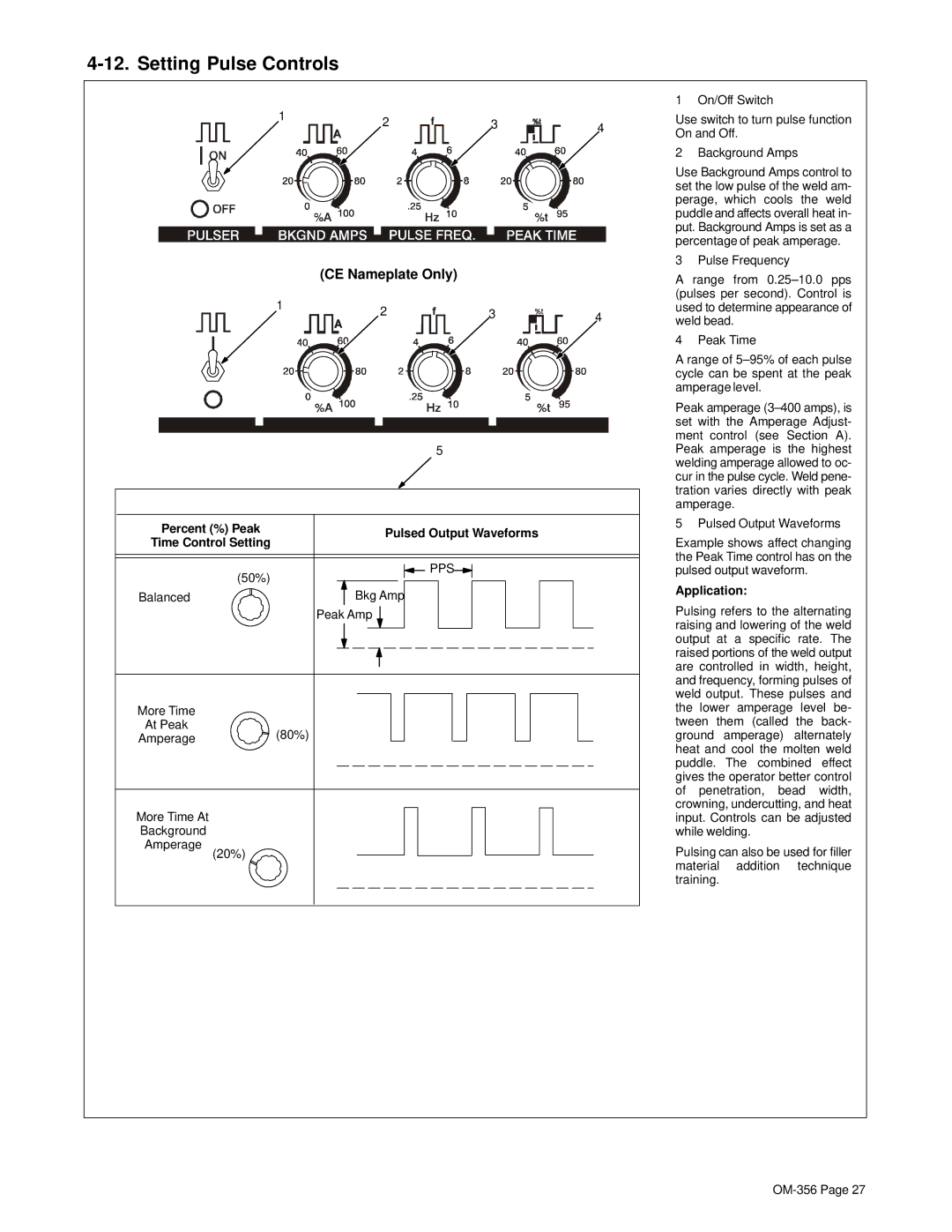
4-12. Setting Pulse Controls
1 | 2 | 3 | 4 |
| |||
|
|
|
(CE Nameplate Only)
1 | 2 | 3 | 4 |
|
5
Percent (%) Peak | Pulsed Output Waveforms | |
Time Control Setting | ||
| ||
(50%) | PPS | |
| ||
Balanced | Bkg Amp | |
| Peak Amp |
More Time
At Peak
Amperage(80%)
More Time At
Background
Amperage
(20%)
1 On/Off Switch
Use switch to turn pulse function On and Off.
2 Background Amps
Use Background Amps control to set the low pulse of the weld am- perage, which cools the weld puddle and affects overall heat in- put. Background Amps is set as a percentage of peak amperage.
3 Pulse Frequency
A range from
4 Peak Time
A range of
Peak amperage
5 Pulsed Output Waveforms
Example shows affect changing the Peak Time control has on the pulsed output waveform.
Application:
Pulsing refers to the alternating raising and lowering of the weld output at a specific rate. The raised portions of the weld output are controlled in width, height, and frequency, forming pulses of weld output. These pulses and the lower amperage level be- tween them (called the back- ground amperage) alternately heat and cool the molten weld puddle. The combined effect gives the operator better control of penetration, bead width, crowning, undercutting, and heat input. Controls can be adjusted while welding.
Pulsing can also be used for filler material addition technique training.
